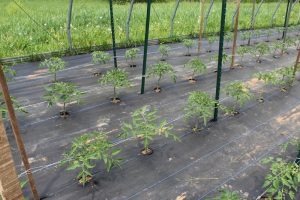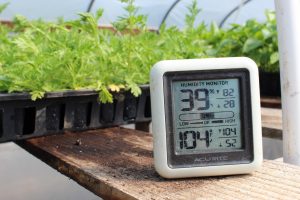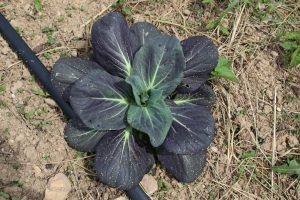Transferable Skills
I was a bit nervous about applying for the F.A.R.M program. Was I too old? Was I too inexperienced? I’ve spent my career managing museum collections, but my 40th birthday is approaching and I felt like I needed a change. Would I be totally out of my depth in moving from a windowless museum storage room to a farm in the great outdoors? I have been surprised how much my life in museums prepared me for life on the farm and greenhouse. My F.A.R.M. mentor, Tamara, can tell you how many times she’s taught me something only to have me respond “oh yeah, that’s just like what we do in a museum!”
A few examples:
 Labeling
Labeling
If a museum object’s label goes missing, you are up the creek. You no longer have any idea what that thing is or where it came from. Without its associated data, a museum object is pretty much worthless. The same goes for the greenhouse. Tamara grows more than 20 varieties of tomatoes at TNT Farm N Greenhouse. Without a label, there’s no telling which one is which until the fruit shows up, and that’s too late if you’re trying to sell plants. I developed a love of labeling and marking things when working in collections storage, so I was pretty excited when I found out that I got to label baby plants in the greenhouse during this internship.
Measuring
When installing a museum exhibit, you have to do a lot of arithmetic. If you have X number of framed prints and Y feet of gallery wall space, how far apart do you hang the pieces? How close together can you put floor cases and still have room for a visitor in a wheelchair to get through? I hadn’t thought about before I showed up at the farm, but you use similar math skills when growing annual vegetables. If plants need to be X inches apart in rows Y feet apart, and you have Z number of feet in the high tunnel, how many seeds should you start?
 Climate monitoring
Climate monitoring
Controlling temperature and humidity in museum collection storage spaces is crucial. Too hot and humid? Mold could start growing on your precious artifacts. Too cold and dry? Some materials will get brittle and flake. Climate monitoring is crucial to caring for plants in the greenhouse, too. Soil too cold? Seeds won’t germinate. Not enough water? We all know what happens then.
Pest management
Spraying broad-spectrum synthetic pesticides all over a museum is a bad idea. Not only is it harmful to the health of staff and visitors, chemicals can damage artwork, artifacts, and specimens. Critters certainly like to eat museum objects, though – carpet beetles can attack wool uniforms, silverfish can chomp on antique manuscripts – so museums use integrated pest management techniques, like not allowing food in collections areas and modifying the building envelope. It is a lot like pest management on the organic farm. We are not applying synthetic chemicals that could be harmful to our health and disrupt the farm ecosystem, but rather using barrier methods like row cover, encouraging beneficial insects, or applying organic pesticides.
The behind-the-scenes nature of the work 
When we visit a museum exhibit, we don’t typically think about all of the work that goes into creating it – everything from filing legal paperwork necessary for object loans to purchasing the correct tool for removing bolts from a traveling exhibit crate. Similarly, when we visit a grocery store, farmers market, or restaurant, we don’t often think about a farmer looking up a particular knot needed for tying down part of a hoophouse or figuring out the correct ratio of fertilize to add to seed starting mix. I was privileged to be a part of the behind-the-scenes world of museums for over a decade, and I am privileged now to be learning about what goes into running a small farm business as part of the F.A.R.M. program this year.
Those of us who start farming at 40 or beyond will never know as much as the folks who started farming earlier in life. But it’s never too late to learn new things. And you might be surprised how much your previous experiences have prepared you for the challenges you face today.
Emily Robinson, 2019 FARM Intern
TNT Farm N Greenhouse – Meadowview, VA